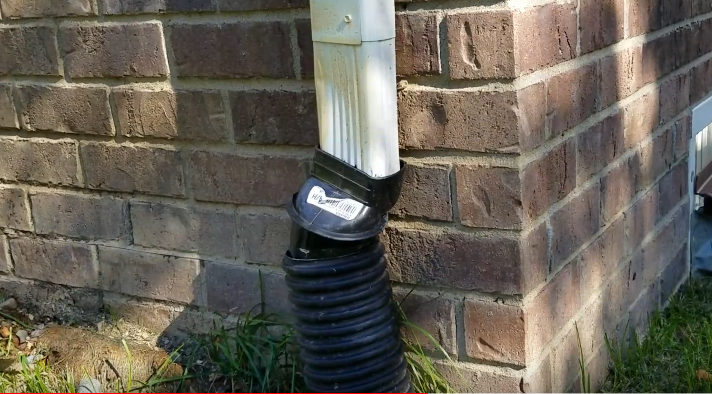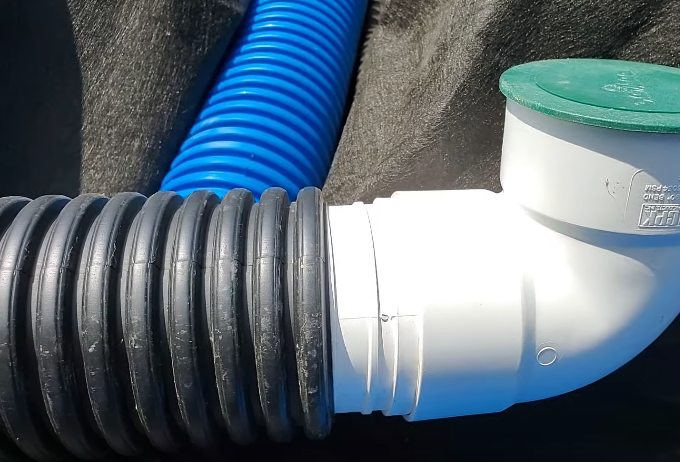As a homeowner, you want to make sure your property is properly maintained, so when you start finding water pooling in odd places—like the garage, attic, basement, or laundry room—it’s time to fix those pesky plumbing leaks. Chances are the water is coming from old and improperly sealed joints on your drain pipes as was in my case.
When you have a leaky joint in your drain pipe, the easiest way to prevent leaks is to use a sealant like mastic.
Other options that I think you have are to purchase premade plastic joints for this purpose, or you can use a rubber sealant product specifically made to seal pipe joints.
Corrugated drain pipe is one of the best ways to direct water away from your house and your foundation. It’s strong and easy to install, but you need to seal the joints to prevent leaks.
If you have an issue with water backing up into your yard from your basement or crawl space, or if your garden is always soggy, then this article is for you.
There are a few different ways you can seal your drain pipe joints, and we discuss them in the next section.
How to stop leakages at joints

When building our new home, at some point, we dealt with rain gutters.
If you’re a DIY-er, you know that metal corrugated drainpipe is the best choice for a lot of applications.
These joints are super sturdy, and they can keep water flowing when other types of joints would collapse from the pressure.
The foreman who worked on most construction aspects of our house, fitted a corrugated galvanized steel drain pipe joined with metallic couplers, which are galvanized metal rings that fit male and female threaded ends of drain pipe.
He did a great job punching holes in the couplings with an air hammer and die-press to accept a threaded pipe joint.
The drain pipe featured ridges that were designed to allow water to drain as it travels from one point to another. This design is perfect for carrying stormwater from one location to another.
However, one of the most common problems with corrugated galvanized steel drain pipes that I’ve seen most people experience is leakage at joints. Leaks may be caused by cracks in the couplings or improper installation.
Here’s how to seal corrugated drain pipe joints to keep water in and other elements out.
- First, remove any dirt around the hole.
- You may need to tap the pipe with a hammer to reduce hole size and ensure a tight seal.
- Cut a piece of rubber that is slightly larger than the joint and measure it around the joint, and against the hole/crack.
- Get an adhesive and apply it to the rubber.
- Always apply a liberal amount of adhesive to the corrugated pipe and press the rubber into the adhesive.
- Cut off the excess and secure it with rondels.
- Make sure the corrugated pipe is centered in the liner and that the entire joint is covered with adhesive.
- Then, paint the corrugated pipe with an exterior polyurethane sealant.
Tips for a long lasting corrugated drains

To help ensure that your corrugated drains last as long as possible, it is important to remember a few things.
- First, make sure that you have installed them correctly, and that the joints are sealed properly.
- Secondly, you should never use wire or plastic ties to fasten the joints together. If you do, you are greatly increasing the chances that the joints will eventually fail.
- Finally, remember to seal the joint with a quality primer and cement sealant.
How to close a joint using PVC
Successfully closing a joint while using PVC is a useful skill to have in your toolkit, since the use of PVC is so prevalent in the construction of water features.
If you’re going to build a pond or fountain, you’re almost certainly going to be using PVC.
While you can close a joint using a variety of methods, the easiest is with the help of a PVC joint-closing tool.
And, while it’s not strictly necessary if you’re working with a single length of PVC, such as when you’re building a small structure, you may end up with a leaky joint if you don’t, so it’s a good idea to have a tool on hand anyway.
Check out this simple way of coming up with a joint.
- When closing the ends of a PVC pipe without a cap, it can be a bit tricky. One method that works well is to drill a hole in the PVC pipe near the end you are attempting to seal, and then insert a piece of metal wire, such as a twisty tie or a small nail, into the hole.
- Then, twist the wire in the direction of the other end of the pipe. As the wire spins, the end of the wire will cut a groove into the end of the pipe.
- Once the groove is cut, you can remove the wire and add a piece of duct tape to seal the end of the pipe.
The most common DIY method for sealing corrugated drainage pipe joints is the use of PVC solvent.
These two-part putties are available at all home improvement centers.
The pipe is cut to shape, and one side is dipped in the solvent.
The solvent sets, bonding the two lengths of pipe together. The solvent must be matched to the type of pipe being used.
There are also rubber and hot tar sealants.
These are used in the same way as the PVC solvent.
The pipe is cut, the sealant is applied, and the pipe sections are pushed together.
When the sealant dries, it hardens to produce a waterproof joint.
You can do it!
If a pipe joint is leaking, or if you accidentally puncture it, you have to fix the pipe quickly.
The problem is that a pipe joint is hermetic, meaning that it has no way to equalize the pressure inside the pipe with the atmosphere outside the pipe on its own.
This means that if one side of the joint is exposed to a lower pressure, the pressure differential will cause pressure to push water back out of the joint.
Corrugated pipe can be hard to work with, but if you take your time and follow the steps I’ve mentioned here, you can easily fix your leaking pipes.
Dab a sealant on the damaged area, then wrap the area and secure the pipe with a rondel in case your pipe is not already in place.

